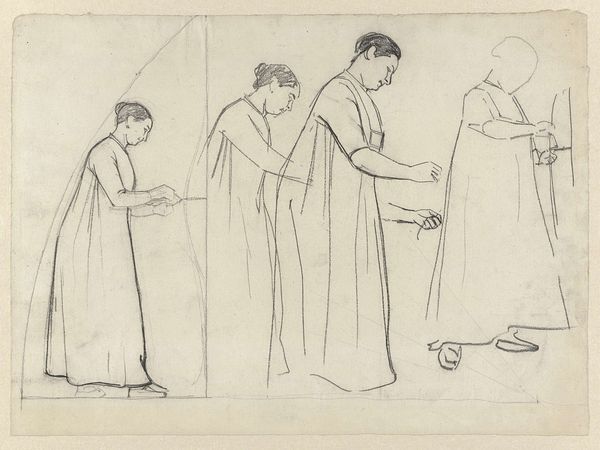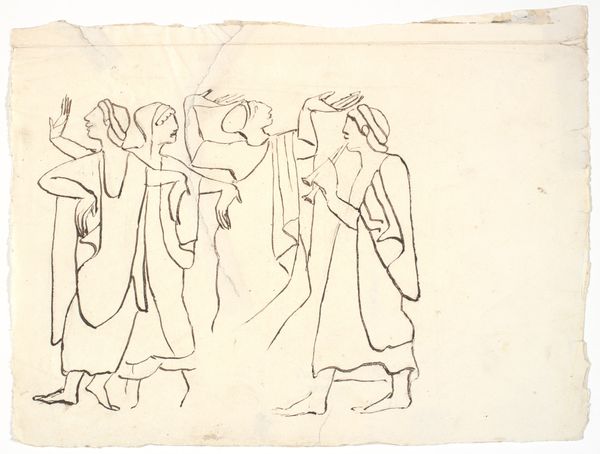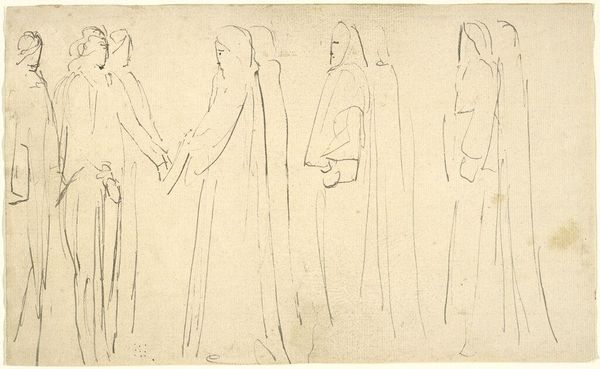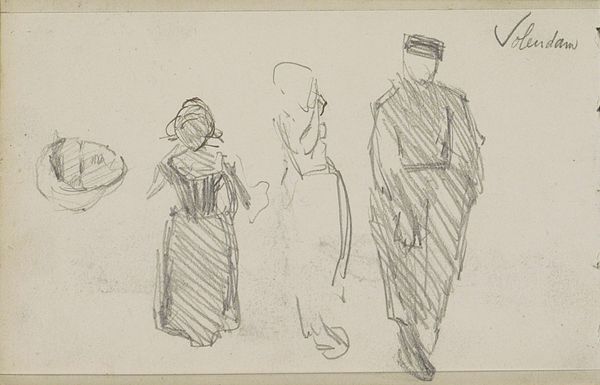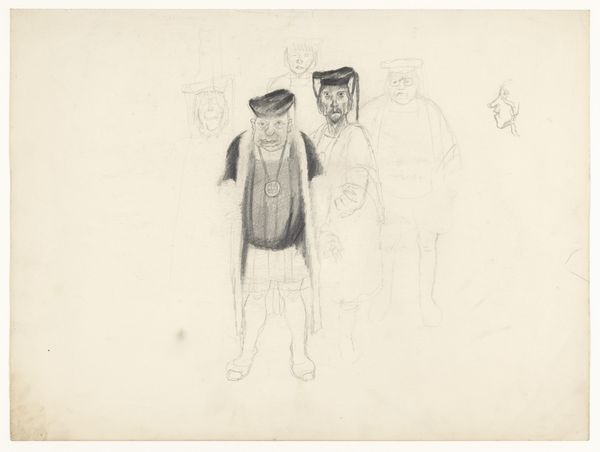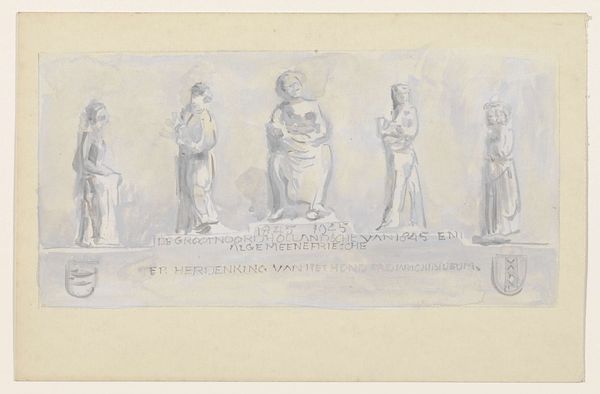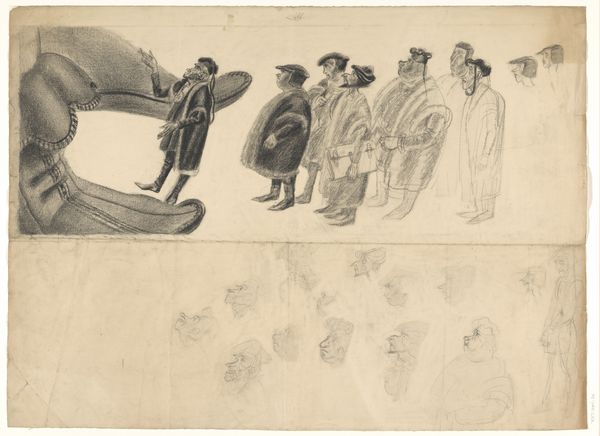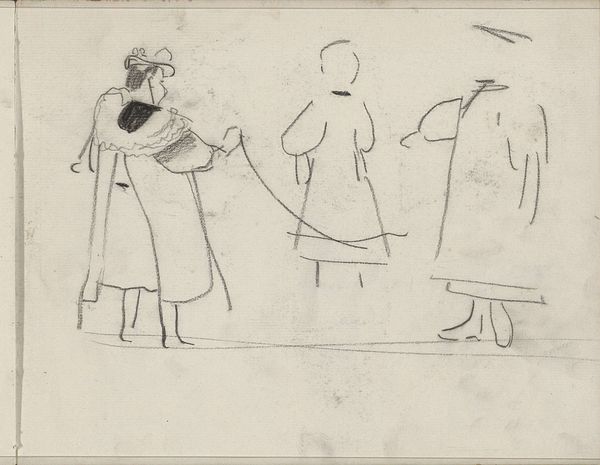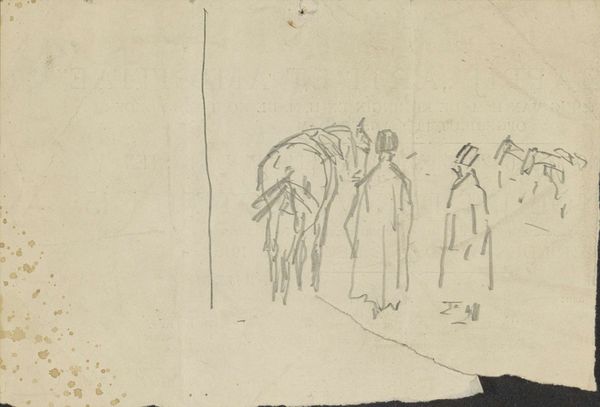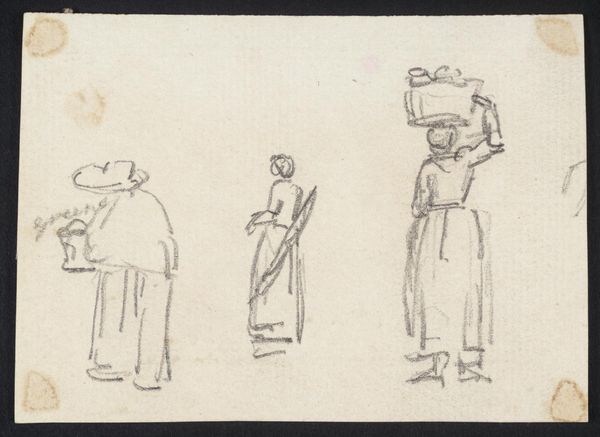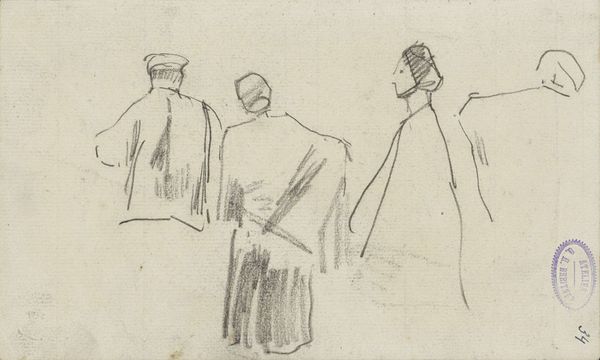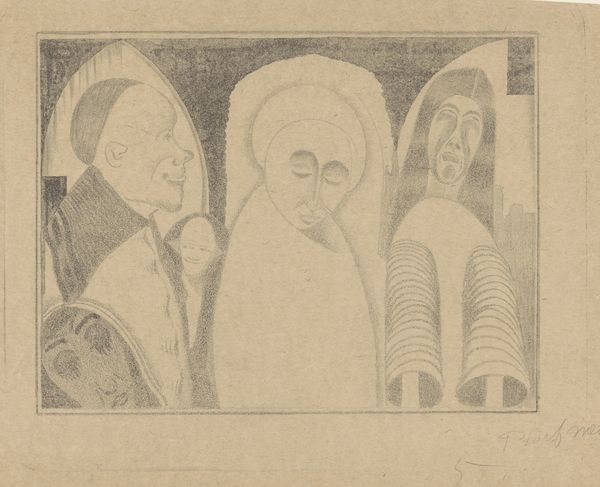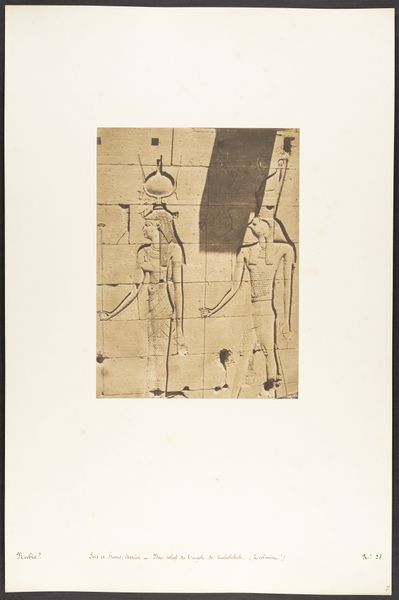
Dimensions: height 233 mm, width 322 mm
Copyright: Rijks Museum: Open Domain
Curator: Today we’re looking at “Three Figures Facing Right and One Facing Left,” an etching by Samuel Jessurun de Mesquita, created in 1922. Editor: My immediate impression is one of subtle unease. The stark lines and somewhat caricatured figures give the piece a rather unsettling feel. Curator: I agree; the linear quality is striking. De Mesquita was working at a time of significant social and political upheaval. His focus on line and form, rather than realism, perhaps reflects an attempt to grapple with the anxieties of the era through abstraction. Notice also that it's a print, a medium with a tradition of social commentary and accessibility. Editor: Interesting. Formally, the contrast between the heavily patterned dress of the central figure and the minimalist robes of the others creates a focal point, guiding the viewer’s eye. The composition almost suggests a stage. Is there a narrative being implied here? Curator: The title hints at a directional element. It underscores the contrast between those moving 'right' and the solitary figure looking 'left.' This was after all a period of artistic experimentation across Europe and beyond, exploring psychological depths through innovative approaches to material handling. Editor: It also seems relevant to consider De Mesquita's own tragic end during the Holocaust. Perhaps a somber prescience permeates his stark vision here? Curator: It's difficult not to see the events of history through the lens of later knowledge. Considering de Mesquita's position, one can examine it in dialogue with contemporaneous movements concerned with social conditions such as Expressionism, that captured the tension and instability of the interwar period. Editor: It makes you think, doesn’t it? Despite the stark aesthetic, or perhaps because of it, the work retains this disquieting feeling of silent observation and hidden narrative. Curator: Precisely. I think De Mesquita's choices about the figures' dress, the materials and the very mode of making art reflects a certain approach to a turbulent period. Editor: Ultimately, I am still captured by the directness of the line work—its stark beauty and underlying darkness.
Comments
No comments
Be the first to comment and join the conversation on the ultimate creative platform.
